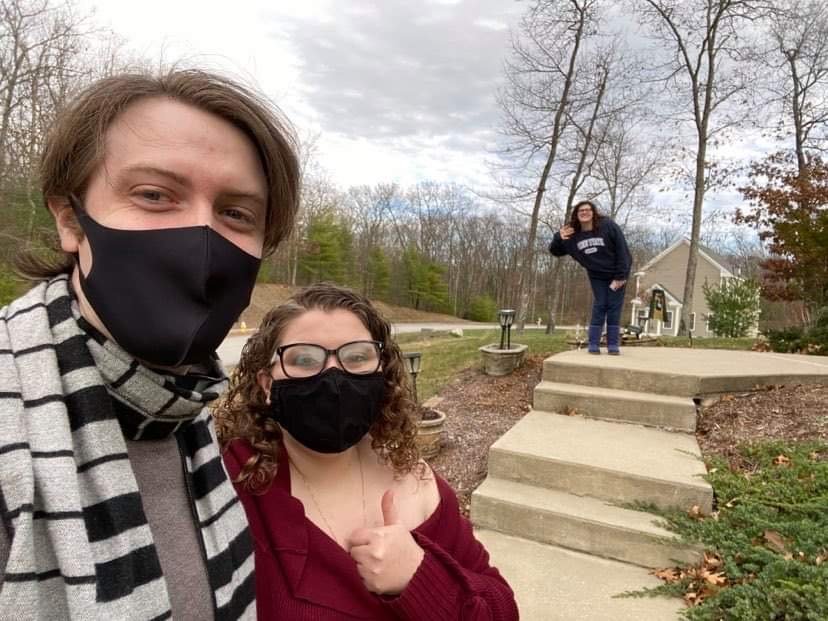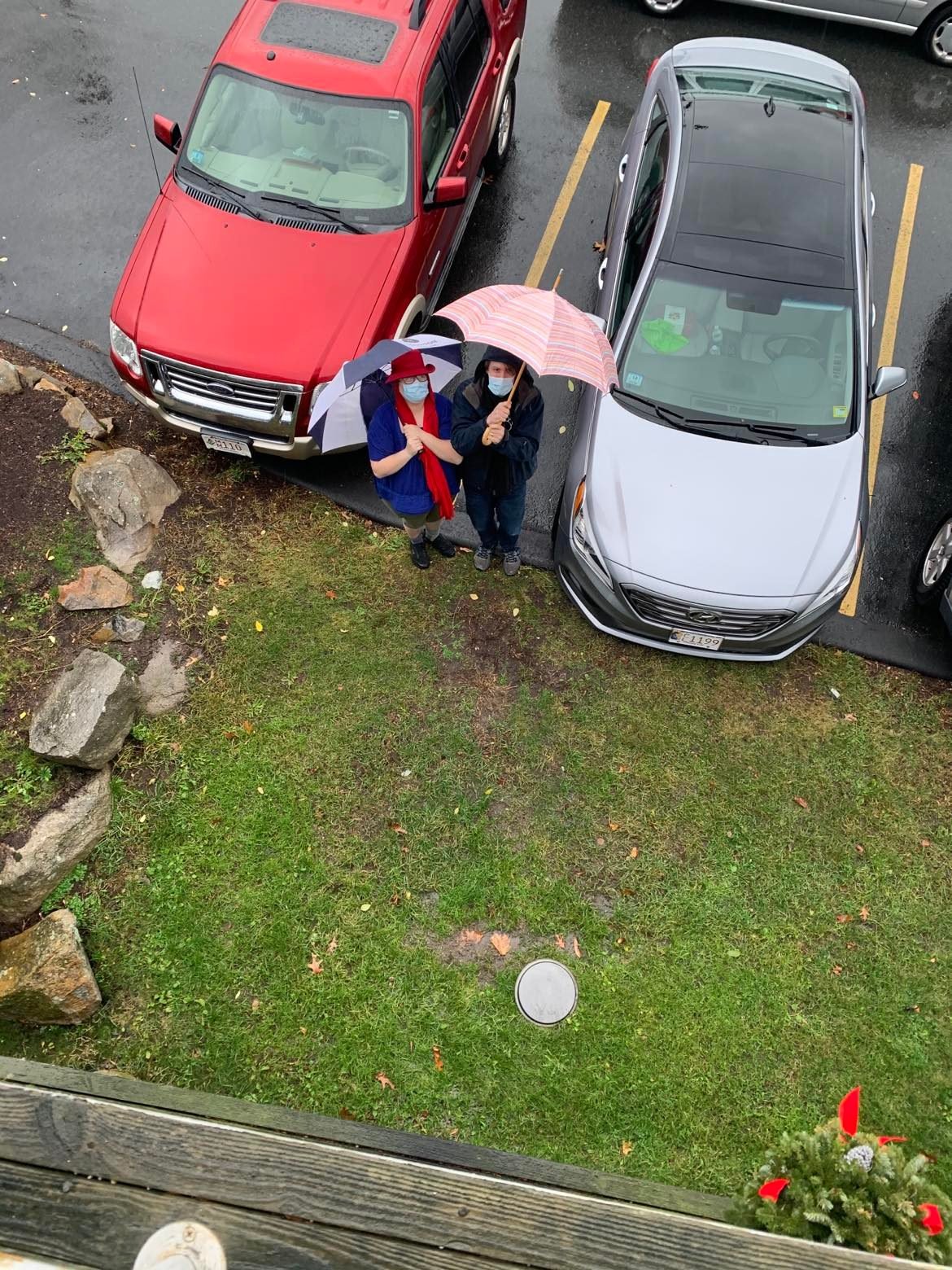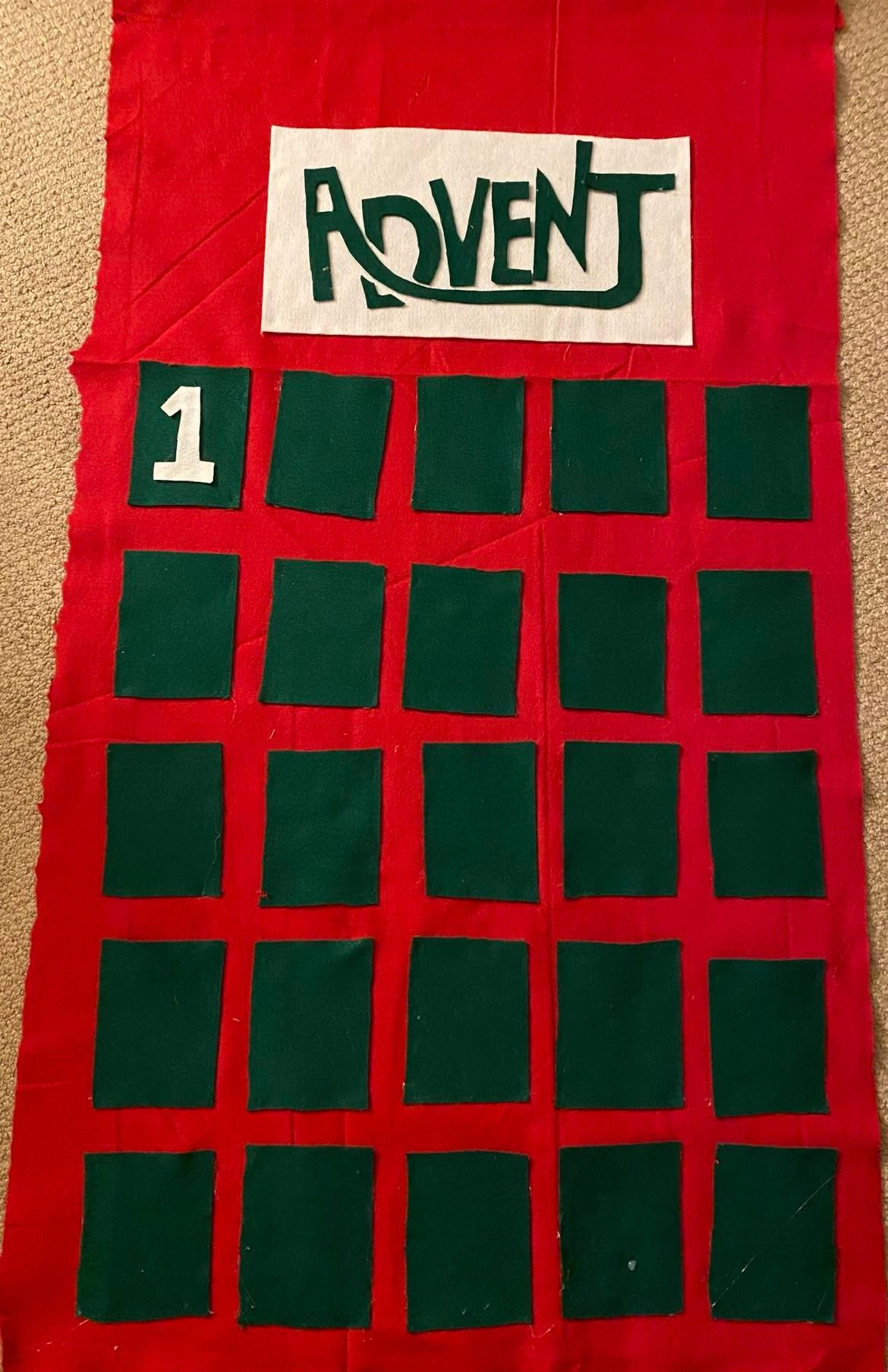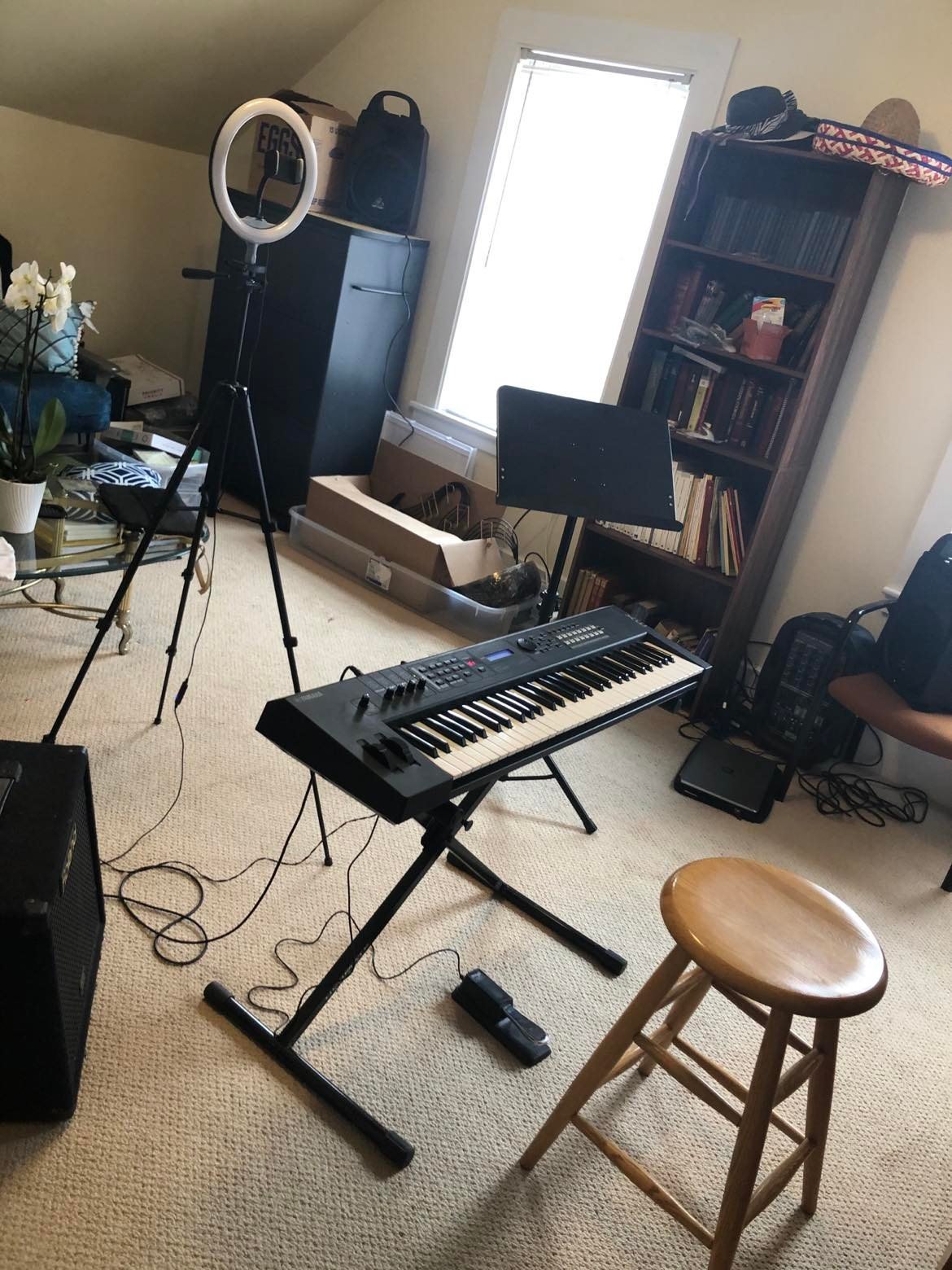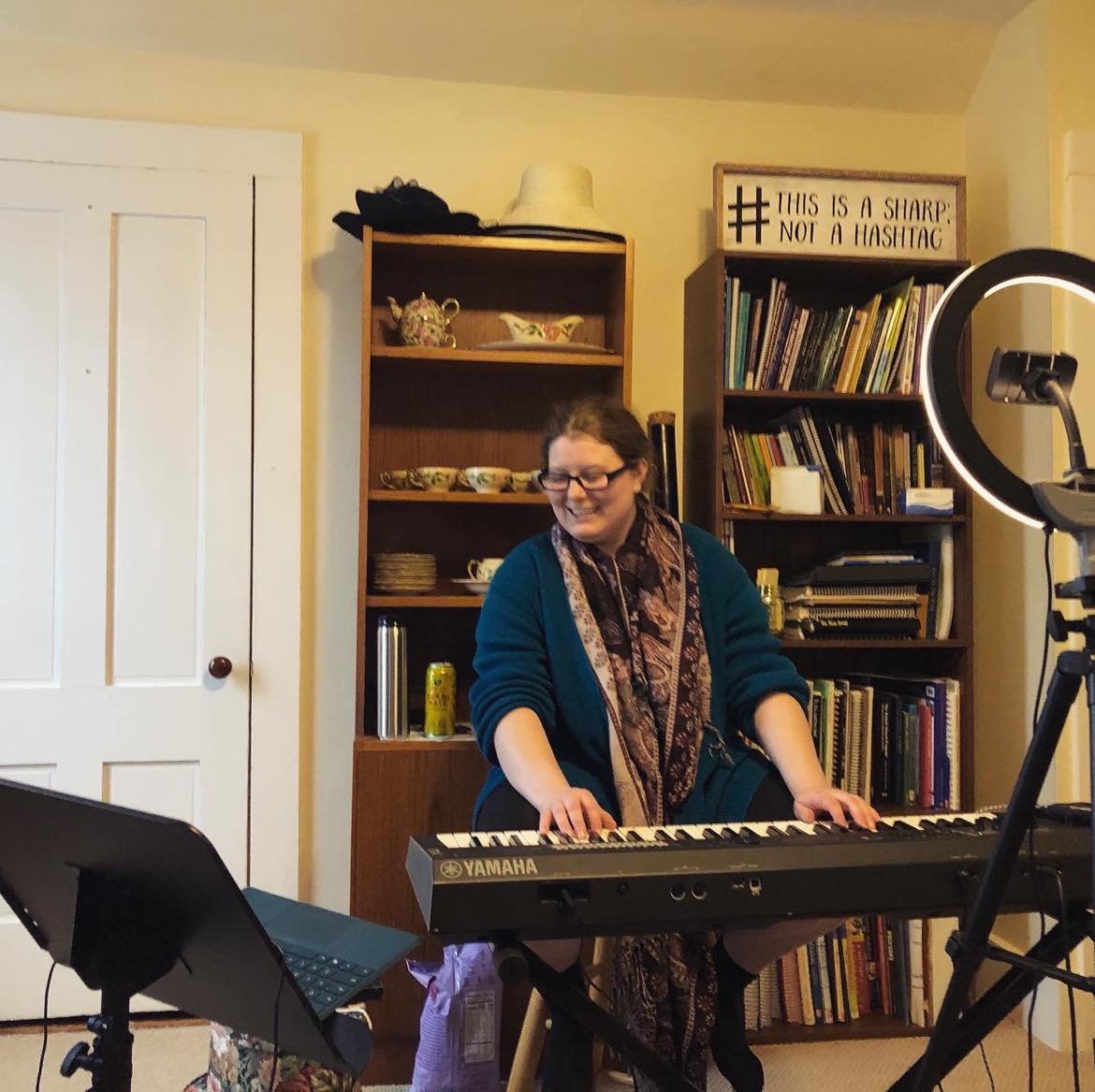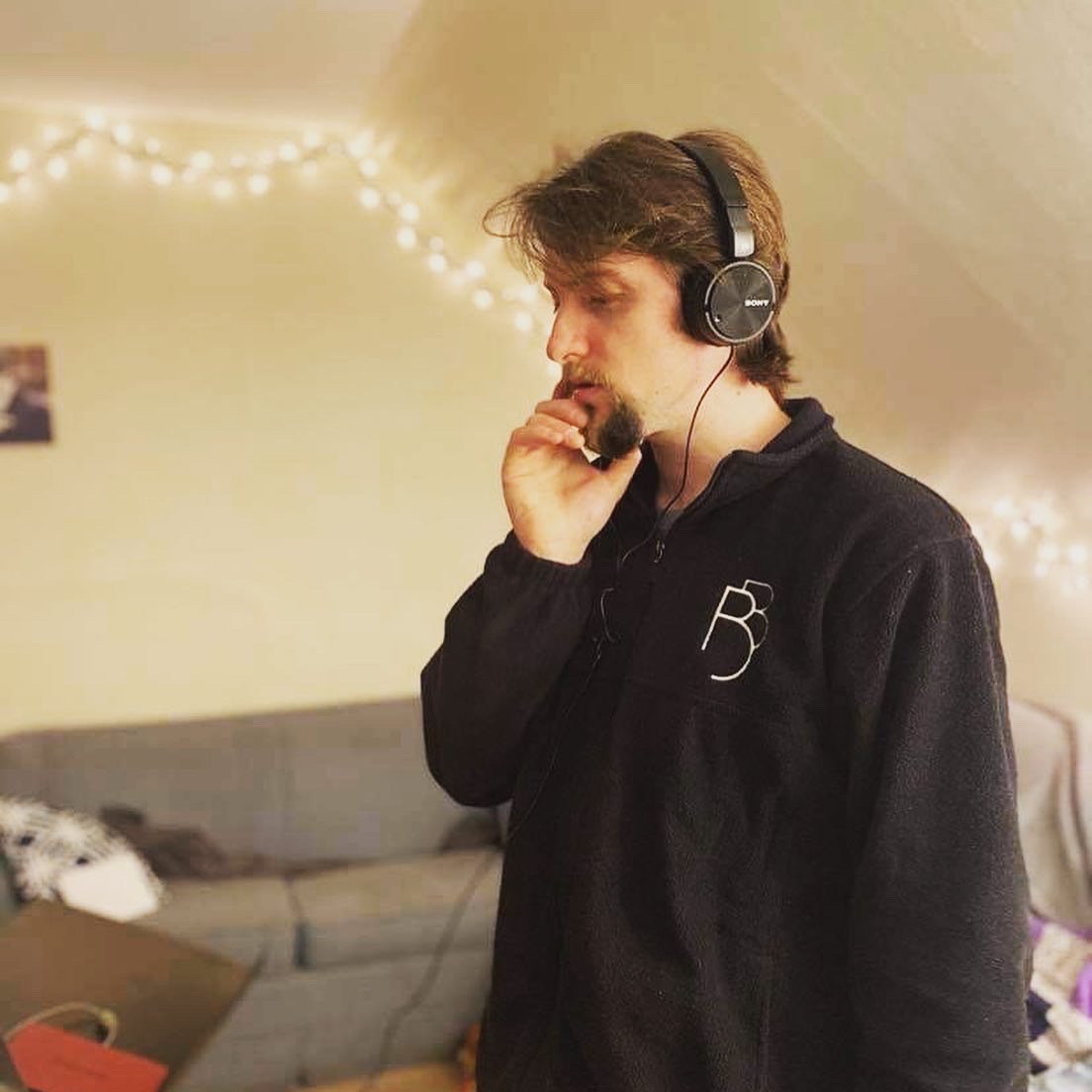Singing Masks
I’m a singing teacher who has tried just about every mask for singing singing on the market -here’s what I’ve found
I tried 10 different masks for singing (some marketed towards singers and some not) and here’s what I found:
First off- I am not an affiliate of any of these companies- I am just a voice teacher who is passionate about vocal health and accessibility. With that said- every singing mask has different benefits and drawbacks to them and trying them all out can get expensive- so I did that part for you. I tested each of these masks for:
What I tested for:
Comfort
Resonance
Price
Fit
Protection
Customer Service and Speed
Here are the masks that I tested:
Surgical Mask (Can be found online or in drugstore/grocery store)
KN95 Mask (Can be found online or in drugstore/grocery store)
3-D Fabric Masks (Amazon Link) —-> Approx. $4 a mask
Broadway Relief Singer’s Mask https://www.broadwayreliefproject.com/singersmask ——> Approx. $25/mask
Singer’s Mask on Amazon (click here) ——> Approx. $22/mask
TMF Singer’s Mask (NATS Choice) https://stores.inksoft.com/nats/shop/home ——> Approx. $10-$15/mask
Midura Design’s Singer’s Mask https://miduradesigns.com/3d%2Fsinger-mask-shop —-> Approx. $15/mask
DCBL Mask (Marketed toward Speakers) https://www.dcblmasks.com/ —-> Approx. $15-$20/mask
Mask extender (Amazon Link) —-> Approx. $8 per pack of 10
Plastic 3-D Frame for Mask (Amazon Link) —-> Approx. $10 per pack of 10
Too Long Didn’t Read Version (TLDR) My top choice is DCBL X-1 Mask https://www.dcblmasks.com/
They are a little pricey ($15-$20 per mask), but they are the most comfortable, best protection and best resonance in my opinion. I also can breathe really easily in them without problem. If you are able to invest I’d suggest buying a few of these to switch between when one is in the wash. Also a great options for teachers or other voice users. Everyone has different bone structure and preferences so I’ve included what I like and dislike about the other mask options.
I’m going to rank my top picks for each category and then elaborate a little on each option.
Comfort
DCBL X-1 Mask
Midura Design
3-D Mask
Mask Extender and/or 3-D Frame can really help make any mask more comfortable
Least Comfortable: Broadway Relief Project Singer’s Mask
Resonance
DCBL X-1 Mask
TMF Mask
Broadway Relief Mask
Worst Resonance: Surgical Mask without extender or frame
Price
Fabric mask or surgical mask with extender and frame (trade off: some comfort- especially jaw tension)
TMF Singer’s Mask (trade off: worse customer service and longest wait time)
Most Expensive: Broadway Singer’s Relief
Fit (somewhat depends on face shape)
DCBL Mask (somewhat adjustable)
Midura mask (comes in different sizes)
TMF (comes in different sizes)
Protection
DCBL X-1 Mask
KN95 (Trade off in resonance)
TMF Mask
Least Protection: Any mask that does not fit you! You should have a seal around your whole mouth! Always check fit for your masks! And make sure you can move your jaw without it falling off! Also look for layers! Is it single layer or 3 layer? If it’s reusable how easy is it to wash? Will you be able to regularly wash it or “quarantine” it between washes?
Customer Service and Speed
DCBL X-1 Mask
3-D Fabric Masks
Broadway Relief Mask
Worst Customer Service: TMF- it took months to receive my masks, and even then my order was wrong.
Surgical Mask (Can be found online or in drugstore/grocery store)
This is the one most of us are accustomed to using
Benefit: easily accessible and inexpensive, also disposable
Downsides: hard to move jaw and lips, not best resonance, tends to collapse when inhaling, neck tension
Ways you can make this better: use a mask extender and/or 3-D Frame. They are inexpensive, reusable and can be paired with any mask for more room to room, less inhalation collapsing and to try to reduce neck/jaw tension.
2. KN95 Mask (Can be found online or in drugstore/grocery store)
This provides the most safety and is fairly accessible
Not great for resonance, BUT you could pair this with a microphone to amplify your sound
3. 3-D Fabric Masks (Amazon Link) —-> Approx. $4 a mask
This does not have the most protection, but it is definitely one of the most cost effective options
Just make sure it fits you properly
You can also pair this with the 3-D frame and mask extender
4. Broadway Relief Singer’s Mask https://www.broadwayreliefproject.com/singersmask ——> Approx. $25/mask
Honestly this one is my least favorite for the following reasons:
Most expensive
Clunky and painful (hard wire rim)
Gets incredibly hot while you are singing
Not as good resonance as the others
5. Singer’s Mask on Amazon (click here) ——> Approx. $22/mask
This mask is okay and fine in a pinch
Not the best fit or protection
6. TMF Singer’s Mask (NATS Choice) https://stores.inksoft.com/nats/shop/home ——> Approx. $10-$15/mask
This mask was cited in a study as being one of the better singer’s masks on the marker (protection wise)
It is one of the most cost effective solutions
Fit and comfort are good
The resonance is fair
My customer service experience was appalling. It took months for me to receive my order- and when I got it the order was wrong. I still have not been refunded or sent the corrected masks I was promised two months ago. I would not recommend them for that reason.
7. Midura Design’s Singer’s Mask https://miduradesigns.com/3d%2Fsinger-mask-shop —-> Approx. $15/mask
Pretty good design and sound
There’s so nose bar to help with glasses not getting fogged up (but that might be something you like)
Easy to breathe, but the frame tends to collapse during deep inhales
Different sizes is a nice feature, helps with fit
8. DCBL Mask (Marketed toward Speakers) https://www.dcblmasks.com/ —-> Approx. $15-$20/mask
This is my top pick in just about every area
The customer service is great, the fit is perfect, there is 3-layer protection and easy washing.
Soft and comfortable
Best resonance in any of the masks
One of the only singer’s masks that don’t make you look like a duck
9. Mask extender (Amazon Link) —-> Approx. $8 per pack of 10
Great option for people who don’t like mask behind the ears
Great option for people dealing with tension in neck/jaw from masks
10. Plastic 3-D Frame for Mask (Amazon Link) —-> Approx. $10 per pack of 10
inexpensive option to help with mask collapsing during inhalation
Do You Need a Technical Tune Up? Here’s 10 Tips:
Are you in need of a tune up? Did you sing less or stop singing during Covid? Are you experiencing vocal fatigue or de-conditioning? Here’s 10 Tips for Getting Your Voice Back
Whether you’re out of practice post-covid, you started a new job, or just want to hone in some skills all of us could use a technical tune up! Below I’m giving you ten tips for when you’re feeling rusty. I also created a package for singer’s looking to hone in this skills! Go to https://www.interludemus.com/shop/p/technical-tune-up-gift-card to get yourself or a friend a tune up! Or start by using these tips below:
Find a Routine
Singing in the Shower is Better Than Not Singing At All- Plus the Acoustics are great in there too!
It’s better to practice fifteen minutes a day than not at all. It’s better to sing in the shower or on your morning commute if that’s all the time you can give. Find ways to consistently sing. Singers often feel like if they don’t have an hour to practice it’s not worth it- but that’s a lie. You will progress more with steady, short practice sessions than with occasional marathon sessions. Keep consistent, and start short when you are out of practice.
2. Warm Up Everyday (even if you’re not singing)
For More Warm Ups Head to our FB, instagram or youtube channel and look up “Warm Up Wednesday” or “Technique Tuesdays”
There are lots of ways to warm up. If you have favorite you learned in choir or elsewhere use those! Personally I like to start with semi-occluded vocal tract exercises (SOVT). You could also warm up by humming a simple song.
3. Get into a habit of cooling down
Do you cool down your voice after heavy periods of speaking and singing?
Just like you ought to stretch or walk after vigorous workout it’s important to cool down your voice after speaking or singing. Our vocal folds (AKA vocal cords) are muscles too! As vocal athletes we need to take care of them.
4. Take care of your body first
Your body is your instrument.
Sleep.
Eat well.
Exercise.
All that stuff you know to do….
Take care of yourself mentally and physically if you want to sing well.
5. Learn to LOVE SOVTEs
Semi Occluded Vocal Tract Exercises (SOVT)
Any exercise that partially blocks off your mouth or nose can create positive back pressure to help your vocal folds close more cleanly. This trains you to sing more efficiently and can help you improve range without strain. Some examples of SOVTs include:
Straw phonation
Bubbling into water
Nasals (humming, /n/, /ng/ etc)
Fricatives (/z/, /v/ etc.)
Lip trills
Tongue Rolls
Raspberries
If you want to learn more about SOVTs check out our video series on facebook
6. Find Accountability
Find Ways to Keep Accountable
We Sing Best in Community
Sing with friends
Join a choir
Find a karaoke night (in person or virtual)
Commit to posting on youtube or tiktok
Ask someone to check in with you
7. Be Content With Where You Are At
You might not always like how you like or how you sound… but love it anyways
Respect where you are on your journey. Love your voice today even if you think it sounded better yesterday. You don’t have to be where you want to be to love your voice.
8. Record Yourself
Get into the habit of recording yourself and listening back
We learn a lot when we hear ourself sing. You might find yourself overly critical at first, but slowly you can listen from a place of experimentation rather than cynicism.
Having recordings of yourself over time also helps you notice when you’ve improved. It’s easy to not notice slow and incremental progress. I like to have records to see where I’ve come from.
9. Get Back Into Lessons
A Good Teacher Can Make All the Difference
People take lessons in all genres and at all levels. Whether it’s weekly lessons or an occasional drop in having the outside ear of a professional teacher can help. They can recommend exercises and a “vocal workout routine.” If you are interested in taking voice lessons with Ella checkout interludemus.com/studiohome
10. If It’s Not Getting Better- Get Scoped!
Vocal Fatigue and Pain Isn’t Normal
If you are feeling itching, tickling or scratching when you sing you might be dealing with a vocal injury, misuse or overuse. You shouldn’t feel hoarse or lose your voice by the end of the day. If you are experiencing some of these symptoms speak to an ENT or Otolaryngologist who works with singers. They may want to scope your throat or send you to a Speech Language Pathology (SLP) to give you the tools and knowledge you need to keep your voice healthy.
Singing Isn’t Cancelled
Most singers know that when they perform there are dangers. Singing is deeply emotional and spiritual- when you bear your soul to the world it’s vulnerable and scary. Singers are weary of vocal injuries and the physical toll that being a vocal athlete can have. However, most of us did not think that singing could be a contributor to a pandemic.
#FightTheFatigue is an initiative started by the National Association of Teachers of Singing (NATS). NATS has been working tirelessly to provide resources for teachers, administrators and singers about how to keep singing alive in a time where singing needs to be reinvented. Check their website out for resources about singing safely during COVID-19.
Most singers know that when they perform there are dangers. Singing is deeply emotional and spiritual- when you bear your soul to the world it’s vulnerable and scary. Singers are weary of vocal injuries and the physical toll that being a vocal athlete can have. However, most of us did not think that singing could be a contributor to a pandemic.
NATS Fight the Fatigue Campaign
#FightTheFatigue is an initiative started by the National Association of Teachers of Singing (NATS). NATS has been working tirelessly to provide resources for teachers, administrators and singers about how to keep singing alive in a time where singing needs to be reinvented. Check their website out for resources about singing safely during COVID-19.
Here are some ways that The Interlude Community has been fighting the fatigue and keeping music alive:
Covid Caroling:
We drove to 50 different houses to bring cookies, Christmas cheer and socially distanced caroling in December of 2020. It was a wonderful and safe way to continue to connect with music.
Virtual Lessons:
Before the shutdown I was coincidentally already experimenting with online lessons. Thankfully, this allowed for a fairly smooth transition when all of my lessons went virtual in March. With time, research and tweaking I am loving the new format. It allows me to see exactly where and how my students are practicing. It gave students the opportunity to get over practicing anxiety in their homes and for many the familiar space helped shy students to shine! (Keep your eye out for future posts about the benefits and drawbacks to online lessons and posts about optimizing online lessons).
Revamping Home Recording Studios:
We’ve been updating our recording equipment as well as helping others update theirs! We’ve been making videos and audio recordings for Churches, Special Events, Communication by Captivation, and other musicians looking for instrumental and vocal tracks.
Virtual Concerts:
My husband and I have held a variety of virtual concerts (both live and pre-recorded. Some have been just the two of us and others have been with our students. We’ve also been able to have students participate in virtual competitions such as the Hal Leonard Competition and the NATS Boston Competition.
Below is our Christmas Vespers concert we created for the church Devereux is the Worship Arts Director for Community Congregational in Billerica, MA. We arranged each of the songs ourselves for this reflective service which combined songs and scriptures.
Spotlight Series:
We’ve been working to showcase the work of different musicians and educators during the COVID-19 pandemic. So many artists have been innovative and inspiring and we want to highlight to amazing things people are doing. Follow us on Facebook and Instagram to get spotlight updates about music happening right now.
How are you keeping music alive? Comment below with what you have been working on, and any links, or social media accounts to follow with your work 🙂

















